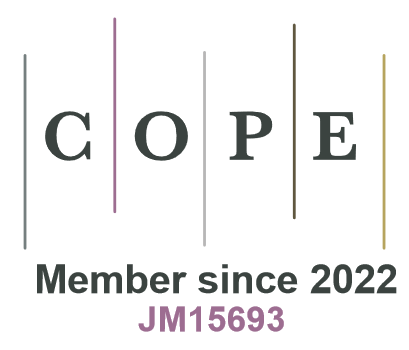Body composition and basal metabolic rate in pregnant women
DOI:
https://doi.org/10.2478/anre-2013-0002Keywords:
pregnant women, body composition, basal metabolic rate, BaniyaAbstract
Pregnancy, a milieu of physiological and metabolic adaptation, is associated with enhanced basal metabolic rate by alteration in maternal tissue and metabolism to ensure foetal growth and development. A cross-sectional study of Indian Baniya females was conducted to assess the relationship between basal metabolic rate and body composition during pregnancy. The 20–40 year old female subjects were broadly categorized in two groups; pregnant (N=198) and non-pregnant (N=35).Anthropometric measurements of each subject included height and weight, with basal metabolic rate (BMR), fat mass (FM), fat-free mass (FFM) and total body water (TBW) assayed by bioelectric impedance body composition analyzer. The descriptive statistics revealed pregnancy associated weight gain, increased FFM, FM, TBW and BMR with marked changes during the second and third trimesters. Although multiple linear regression analysis showed substantial change in BMR due to both FM and FFM, fat-free mass contributed to a much lesser extent. Pregnancy, as an anabolic phase of the female reproductive cycle, is associated with metabolic flexibility which alters the relationship between body composition and BMR. These findings however require further validation in longitudinal design studies.
Downloads
References
Bowerman BL, O’Connell RT. 1990. Linear statistical models: an applied approach. 2nd Edition. Belmont, CA: Duxbury.
View in Google Scholar
Bronsteina MN, Maka RP, King JC. 1996. Unexpected relationship between fat mass and basal metabolic rate in pregnant women. Br J Nutr 75: 659–68.
View in Google Scholar
Butte NF, Hopkinson JM, Mehta N, Moon JK, Smith EO’Brian. 1999. Adjustments in energy expenditure and substrate utilization during late pregnancy and lactation. Am J Clin Nutr 69:299–307.
View in Google Scholar
Butte NF, Wong WW, Treuth MS, Ellis KJ, O’Brian Smith E. 2004. Energy requirements during pregnancy based on total energy expenditure and energy deposition. Am J Clin Nutr 79:1078–87.
View in Google Scholar
Campbell-Brown M, Hytten F. 1998. Nutrition. In G Chamberlain and PF Broughton, editors. Clinical physiology in obstetrics. 3rd edition. Oxford, United Kingdom: Blackwell Science: 165–91.
View in Google Scholar
Ellison PT. 2001. On fertile ground. Cambridge, MA: Harvard University Press.
View in Google Scholar
Forsum E, Sadurskis A, Wager J. 1988. Resting metabolic rate and body composition of healthy Swedish women during pregnancy. Am J Clin Nutr 47:942–47.
View in Google Scholar
Forsum E. 2004. Energy requirements during pregnancy: old questions and new findings. Am J Clin Nutr 79 (6):933–34.
View in Google Scholar
Frankenfield DC, Cooney RN, Smith JS, Rowe WA. 1999. Bioelectrical impedance plethysmographic analysis of body composition in critically injured and healthy subjects. Am J Clin Nutr 69:426–31.
View in Google Scholar
Goldberg G, Prentice A, Coward W, Davies HL, Murgatroyd PR, C Wensing, Black AE, Harding M, Sawyer M. 1993. Longitudinal assessment of energy expenditure in pregnancy by the doubly labeled water method. Am J Clin Nutr 57:494–505.
View in Google Scholar
Hytten F. 1980. Nutrition. In F Hytten and G Chamberlain, editors. Clinical physiology in obstetrics. Oxford, United Kingdom: Blackwell Scientific Publications.
View in Google Scholar
Hytten FE, Leitch I. 1971. The physiology of human pregnancy. Oxford, United Kingdom: Blackwell Scientific Publications.
View in Google Scholar
Lawrence M, Lawrence F, Coward WA, Cole TJ, Whitehead RG. 1987. Energy requirements of pregnancy in the Gambia. Lancet 2(8567):1072–76.
View in Google Scholar
Levario-Carrillo M, Avitia M, Tufino-Olivares E, Trevizo E, Corral-Terrazas M, Reza-Lopez S. 2006. Body composition of patients with hypertensive complications during pregnancy. Hypertens Pregnancy 25:259–69.
View in Google Scholar
Lof M, Olausson H, Bostrom K, Janerot-Sjöberg B, Sohlstrom A, Forsum E. 2005. Changes in basal metabolic rate during pregnancy in relation to changes in body weight and composition, cardiac output, insulin-like growth factor I, and thyroid hormones and in relation to fetal growth. Am J Clin Nutr 81:678–85.
View in Google Scholar
Lukaski HC, Bolonchuk WW. 1987. Theory and validation of the tetrapolar BIA method to assess Human Body composition. In: KJ Ellis, S Yasumura, and WD Morgan, editors. In vivo Body Composition Studies. The Institute of Physical Sciences, London.
View in Google Scholar
Lukaski HC, Hall CB, Siders WA. 2007. Assessment of change in hydration in women during pregnancy and postpartum with bioelectrical impedance vectors. Nutrition 23(7–8):543–50.
View in Google Scholar
Menard S. 1995. Applied logistic regression analysis. Sage University paper series on quantitative applications in the social sciences. Thousands Oaks, CA: Sage.
View in Google Scholar
Nelson KM, Weinsier RL, Long CL, Schutz Y. 1992. Prediction of resting energy expenditure from fat-free mass and fat mass. Am J Clin Nutr 56:848–56.
View in Google Scholar
Okerede NC, Huston-Presley L, Amini SB, Kalhan S, Catalano PM. 2004. Longitudinal changes in energy expenditure and body composition in obese women with normal and impaired glucose tolerance. Am J Physiol Endocrinol Metab 287:472–79.
View in Google Scholar
Prentice A, Spaaij C, Goldberg GR, Poppitt SD, Van Raaij JM, Totton M, Swann D, Black AE. 1996. Energy requirements of pregnant and lactating women. Eur J Clin Nutr 50:82–111.
View in Google Scholar
Ravussin E, Lillioja S, Knowler WC, Christin L, Freymond D, Abbott WG, Boyce V, Howard BV, Bogardus C. 1988. Reduced rate of energy expenditure as a risk factor for body-weight gain. N Engl J Med 318: 467–72.
View in Google Scholar
Segal KR, Gutin B, Presta E, Wang J, Van Itallie T. 1985. Estimation of human body composition by electrical impedance methods: a comparative study. J Appl Physiol 58:1565–67.
View in Google Scholar
Svendsen OL, Hassager C, Christiansen C. 1993. Impact of regional and total body composition and hormones on resting energy expenditure in overweight postmenopausal women. Metabolism 42: 1588–91.
View in Google Scholar
Wang Z, Heshka S, Gallagher D, Boozer CN, Kotler DP, Heymsfield SB. 2000. Resting energy expenditure-fat-free mass relationship: new insights provided by body composition modelling. AJP 279 (3): 539–45.
View in Google Scholar
Weiner JS, Lourie JA. 1981. Practical Human Biology. Academic Press: New York.
View in Google Scholar
Weinsier RL, Yves S, and David. 1992. Re-examination of the relationship of resting metabolic rate to fat-free mass and to the metabolically active components of fat-free mass in humans. Am J Clin Nutr 55:790–94.
View in Google Scholar
Weyer C, Snitker S, Bogardus C, Ravussin E. 1999. Energy metabolism in African Americans: potential risk factors for obesity. Am J Clin Nutr 70: 13–20.
View in Google Scholar
Downloads
Published
How to Cite
Issue
Section
License

This work is licensed under a Creative Commons Attribution-NonCommercial-NoDerivatives 4.0 International License.








